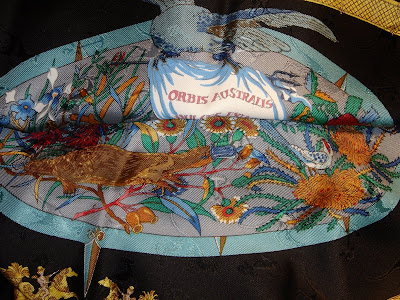



Among the many scientific professionals under Baudin's command was a zoologist trainee by the name of Francois A. Peron. Peron had saught to join Baudin's expedition after a tragic end to a love affair. He had wanted to serve as an anthropological observer, instead he was appointed zoologist trainee, later in the voyage his position would be elevated to a prominent position of sole zoologist after others were lost along the voyage due to death and desertion.
Historically Peron would become famous for documenting the voyage after the death of Captain Baudin. But most importantly with the help of fellow shipmate, artist Charles Alexandre Lesueur, Peron gathered over 100,000 zoological specimens. The most comprehensive Australian natural history collection to date.
Charles A. Lesueur was employed for the main job of illustrating Baudin's log books. As the journey progressed Lesueur became more of a specialist in drawing animals. This is because he became very close friends with the zoologist Péron. Péron was disliked a great deal by Baudin and made many enemies during the voyage. However, he and Lesueur became firm friends. Under Péron's guidance, Lesueur learnt the art of taxidermy, and the skills for trapping and hunting animals. At other times Péron would dance about and play the fool to distract the Indigenous Australians while Lesueur sketched them. Lesueur also learnt from Péron the importance of colour and paying particular attention to detail. Apart from completing drawings of many animals, he produced a variety of landscapes often including aspects of Indigenous Australian culture.
On July 18, 1801 similar expedition had set sail from Great Britian.
 Matthew Flinders
Matthew FlindersHaving been given command of the vessel "The Investigator" Matthew Flinders set sail with a group of scientists, his orders were to chart and map the coast of Australia.
On December 6, 1801, Flinders reached Australia at Cape Leeuwin, and proceeded to begin surveying Australian coastline moving southward along it's shores.
On 8 April 1802 while sailing east Flinders sighted the Le Geographe, a French corvette commanded by the explorer Nicolas Baudin. Both men of science, Flinders and Baudin met and exchanged details of their discoveries, at what would later be named Encounter Bay.










No comments:
Post a Comment